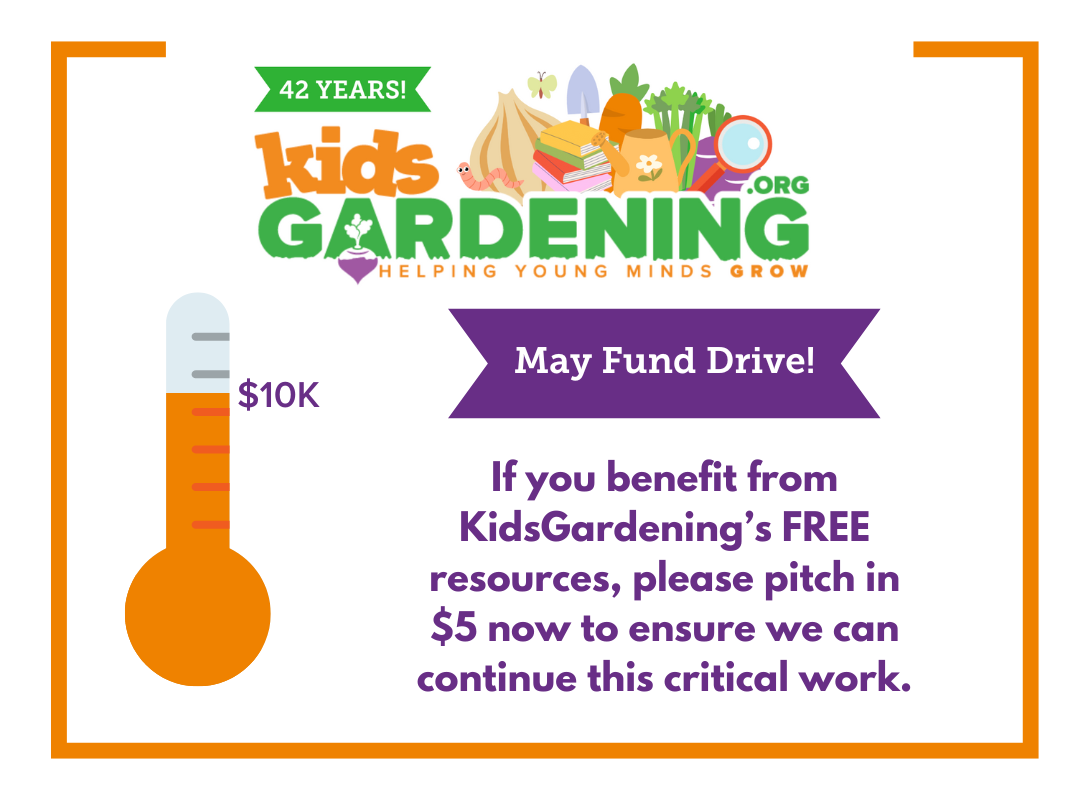Why plant a school garden? School gardens have entered the national spotlight as an effective way to promote life-long healthy eating habits and connect students to the natural world. Gardening provides educators with opportunities to enhance student education through practical, reality-based learning. Goals of school garden programs often include:
- Providing opportunities for hands-on learning, inquiry, observation and experimentation across the curriculum.
Although science and nutrition are the focus of many garden programs, curriculum ties can also be made to the subjects of language arts, math, science, social studies and art. Additionally, the garden is an excellent location to model sustainable practices and present environmental education lessons. - Motivating kids to eat and love fruits and vegetables.
Gardens help get students excited about fruits and vegetables and provide countless opportunities to experience and try the foods that are often the hardest to get kids to eat. - Promoting physical activity and quality outdoor experiences.
Many schools are searching for opportunities and space to offer movement to students. Gardening offers students ample opportunities to walk, lift, carry, dig, plant, and rake, as well as practice balance and dexterity, all while participating in an enjoyable and engaging activity - Supplying local produce to the students.
The nation-wide growth of Farm to School programs and increasing USDA support of local and regional food systems have made serving local, sustainable produce in school meals a reality. Although school garden produce may not account for a large portion of the produce served in the café, there may be enough of a harvest to hold sampling events.
Educators and researchers have noted many benefits to students participating in school garden programs including:
- Increased consumption of fruits and vegetables
- Improvement in attitudes towards fruits and vegetables
- Improvement in science achievement scores
- Improvement in social skills and behaviors
- Improvement in environmental attitudes and instillation of respect for nature
- Positive impact on student achievement and behavior
The school garden offers a place to enrich teaching efforts with powerful hands-on experiences that make learning come alive. Each school or youth garden is as unique as the school or community that plants it. Gardens may come in many configurations, ranging from a collection of container gardens or a grouping of raised beds to a half-acre of plowed land. Garden programs can also be conducted using indoor light gardens or greenhouse plantings to accommodate the challenge weather poses in many areas during the school year. Successful garden programs do have certain features in common, however – they are designed to meet local program needs, to be sustainable, and to use the physical site and available resources to their fullest.
Although the physical appearance of school gardens varies greatly, there are a few common steps all garden leaders must take to create a successful and sustainable program. Developing a school garden program comes down to planning and building in three main areas: people, place, and plant care. The basic steps to building a successful school garden program include:
- Gathering Support
- Forming a Garden Committee
- Determining Garden Program Goals
- Designing the Garden
- Identifying Needs and Obtaining Resources
- Finding Funding
- Valuing Volunteers
- Designing a Garden Program for All
- Connecting the Garden to the Classroom
- Digging in: Planting and Growing Basics
- Enjoying the Harvest
- Sustaining Your Program
Taking goals and potential benefits into account, it is easy to see why interest is high in installing school gardens and implementing gardening programs to serve as teaching tools. These articles on our website will introduce you to all the steps necessary for launching and sustaining a successful school garden program. We hope it will empower you to begin your journey and excite you about the possibilities.
Although following through on each of these steps may seem cumbersome, taking time to properly plan leads to a stronger program. Planning is the systematic process of working through each of these areas to develop a strategy for making your own school garden program function successfully.
Defining the functional goals of your garden is simply stating what you want to teach, but within the garden setting instead of the classroom. School gardens are not just places for plant science and ecology; they are places for art, music, math and creative writing. In the garden you can teach about sharing and teamwork, as well as the interconnected web of life.
Keep in mind that it is best to plan big, but start small. A large project can exhaust the enthusiasm of your students and volunteers. Let them get excited about the success of a bountiful, enjoyable, but small garden; then expand as your confidence and experience increases.



